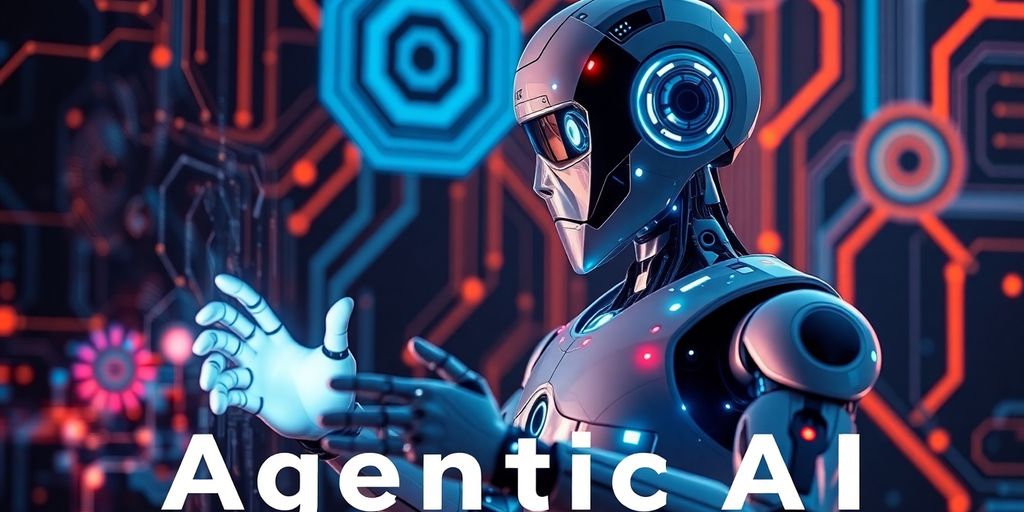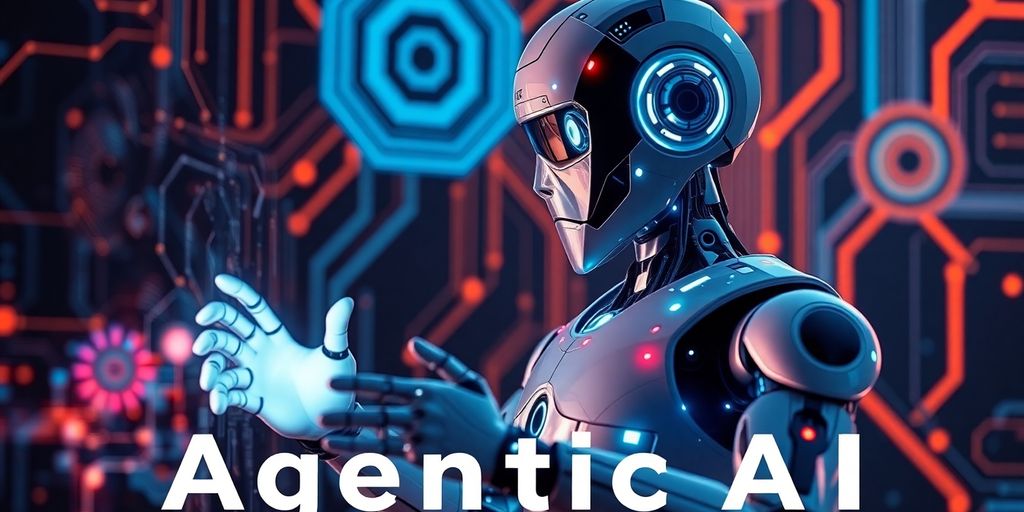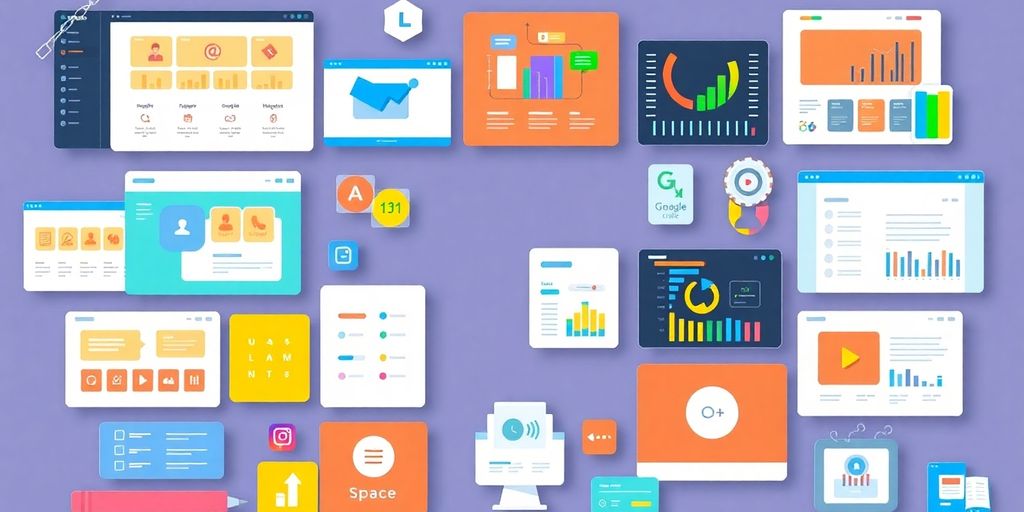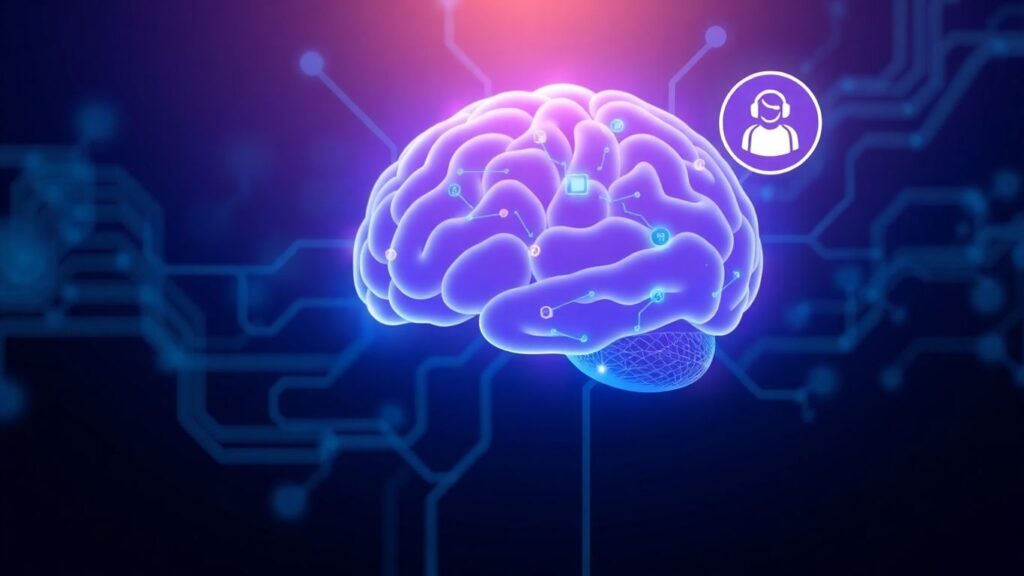What Is the meaning of Agentic AI

Agentic AI is changing the game in the world of artificial intelligence. Unlike traditional AI, which often requires constant human input, agentic AI can operate independently, making its own decisions and taking actions based on the data it gathers. This technology is designed to learn and adapt over time, making it increasingly effective in various applications. In this article, we’ll explore what agentic AI means, how it works, its benefits, and the challenges it faces as it moves into the future.
Key Takeaways
- Agentic AI can make decisions and act on its own, reducing the need for human oversight.
- It learns from data and user interactions, improving its performance over time.
- Agentic AI is different from traditional AI because it operates with more autonomy and flexibility.
- This technology is being used in various fields like customer service, healthcare, and software development.
- While agentic AI offers many benefits, it also raises concerns about data privacy and integration with current systems.
Understanding Agentic AI

Definition of Agentic AI
Agentic AI is really changing things up. It’s not just about AI doing what you tell it; it’s about AI figuring things out on its own. Think of it as giving AI a goal and letting it run with it, using its own smarts to get there. It’s a blend of different AI approaches, like large language models and machine learning, all working together to make decisions and solve problems with less and less human help. Agentic AI is pretty good at adapting to new situations and events. It’s about AI that can actually think and act independently.
Key Characteristics
Agentic AI has some pretty distinct features that set it apart:
- Autonomy: It can make decisions and take actions without needing constant direction.
- Adaptability: It can adjust to changing circumstances and learn from new data.
- Goal-oriented: It focuses on achieving specific objectives, figuring out the best way to get there.
Agentic AI systems ingest tons of data from different places to figure out problems, come up with plans, and get things done. Businesses are using it to make customer service more personal, make software development faster, and even help patients.
Differences from Traditional AI
It’s important to know the difference between agentic AI and AI agents. Agentic AI is the whole idea of solving problems with less oversight, while an AI agent is a specific part of that system designed to handle tasks on its own. Traditional AI usually needs clear instructions and doesn’t adapt as well. Agentic AI, on the other hand, can handle complex, multi-step problems using reasoning and planning. Think of it this way: a regular chatbot can answer questions, but an agentic AI customer service system could check your balance and suggest ways to pay it off, all while waiting for you to decide. It’s a proactive, AI-powered approach, whereas gen AI is reactive to the user’s input. Agentic AI can adapt to different situations and has “agency” to make decisions based on context. It is used in various applications that can benefit from independent operation, such as robotics, complex analysis, and virtual assistants. You can even use it to personalize customer service in your business.
How Agentic AI Operates
Agentic AI is all about creating AI systems that can act independently to achieve specific goals. It’s like giving AI a brain and the ability to make its own decisions, within certain boundaries, of course. Let’s break down how this actually works.
Autonomous Decision-Making
Agentic AI thrives on autonomy. This means the AI can make choices and take actions without needing constant human input. It’s not just following a script; it’s assessing situations, weighing options, and deciding on the best course of action. Think of it like a self-driving car, constantly making decisions based on what it sees and anticipates on the road.
- Goal setting
- Planning
- Execution
Agentic AI uses a continuous loop of perceiving, reasoning, acting, and learning. This allows it to adapt and improve over time, making it more effective at achieving its goals.
Data Processing Techniques
Agentic AI systems are data-hungry. They need to ingest and process massive amounts of information to make informed decisions. This involves a few key techniques:
- Data Collection: Gathering data from various sources, like sensors, databases, and APIs.
- Data Analysis: Using machine learning algorithms to identify patterns, trends, and insights.
- Knowledge Representation: Organizing and storing data in a way that the AI can easily access and use it for reasoning.
This AI agent can then use this processed data to understand the current situation, predict future outcomes, and choose the best action to take.
Collaboration Among Agents
Sometimes, one AI agent isn’t enough to solve a complex problem. That’s where collaboration comes in. Agentic AI systems can involve multiple agents working together, each with its own specialized skills and knowledge. These agents can communicate, share information, and coordinate their actions to achieve a common goal. This is especially useful in scenarios like supply chain management or customer service, where different agents can handle different aspects of the process. This multiagent system enhances problem-solving capabilities.
| Agent | Task | Data | Output |
|---|---|---|---|
| Inventory Agent | Monitors stock levels | Sales data, supply chain data | Reorder requests |
| Logistics Agent | Arranges shipping | Inventory levels, delivery schedules | Shipping manifests |
| Customer Service Agent | Handles inquiries | Order status, product information | Customer support |
Applications of Agentic AI
Use in Customer Service
Agentic AI is changing customer service. Instead of just answering simple questions, AI agents can now handle more complex tasks like checking account balances and suggesting payment options. Imagine an AI that doesn’t just tell you what you owe, but also figures out the best way for you to pay it off. It’s like having a financial advisor available 24/7. This goes beyond traditional AI, which often struggles with multi-step tasks. Agentic AI uses sophisticated reasoning to solve problems, making it ideal for customer interactions.
Agentic AI can personalize customer service by understanding individual customer needs and preferences. This leads to more satisfying and efficient interactions, improving customer loyalty and reducing support costs.
Role in Healthcare
Agentic AI has a big role to play in healthcare. Think about AI agents that can help with patient interactions, streamline administrative tasks, and even assist in diagnosis. It’s not about replacing doctors, but about giving them tools to make their jobs easier and more effective. For example, an AI agent could monitor a patient’s vital signs and alert medical staff to any potential problems. Or it could help patients manage their medications and appointments. The possibilities are endless. Agentic AI can ingest massive amounts of data from multiple sources to independently analyze challenges.
- Remote patient monitoring
- Personalized treatment plans
- Automated appointment scheduling
Impact on Software Development
Agentic AI is also impacting software development. It can simplify the development and deployment of AI agents, making it easier to integrate AI into daily operations. This means businesses can customize AI agents to meet their specific needs, whether it’s automating repetitive tasks or driving strategic decision-making. Agentic AI can analyze data, set goals, and take actions with decreasing human supervision. It’s like having an extra team member that never sleeps and is always ready to help.
| Task | Traditional Method | Agentic AI Method |
|---|---|---|
| Code Generation | Manual | Automated |
| Testing | Manual | Automated |
| Bug Fixing | Manual | Automated |
Benefits of Agentic AI
Increased Efficiency
Agentic AI can seriously boost efficiency in a bunch of ways. Think about it: these systems are designed to automate tasks, make decisions, and adapt to changing conditions without needing constant human intervention. This means less time spent on repetitive stuff and more time for people to focus on, well, more important things. For example, an agentic AI customer service system could handle routine inquiries, freeing up human agents to deal with complex issues. This not only speeds things up but also reduces the chance of errors, because, let’s face it, humans get tired and make mistakes. Agentic AI doesn’t.
Enhanced Problem-Solving
One of the coolest things about agentic AI is its ability to tackle complex problems. Traditional AI is often rigid, but agentic AI? It can reason, plan, and learn from its mistakes. It’s like having a super-smart assistant that can analyze data from multiple sources, come up with strategies, and then actually execute those strategies. Imagine using it to optimize supply chains, predict market trends, or even develop new products. The possibilities are pretty wild. It’s not just about finding solutions; it’s about finding better solutions, faster.
Adaptability to Change
In today’s world, things change fast. Really fast. And that’s where agentic AI shines. Unlike traditional AI, which needs to be constantly reprogrammed to deal with new situations, agentic AI can adapt on the fly. It can learn from new data, adjust its strategies, and even collaborate with other agents to overcome challenges. This adaptability is a game-changer for businesses that need to stay ahead of the curve. It means they can respond quickly to market changes, customer needs, and unexpected events. It’s like having a system that’s always learning and improving, so you don’t have to worry about it becoming obsolete.
Challenges in Implementing Agentic AI
Agentic AI, while promising, isn’t without its hurdles. Getting these systems up and running smoothly involves tackling some pretty significant issues. It’s not just about the tech; it’s also about how we handle the data and how people react to these new AI systems.
Data Privacy Concerns
One of the biggest worries is data privacy. Agentic AI often needs access to a lot of personal data to work effectively. Making sure this data is protected and used ethically is a major challenge. We need strong safeguards to prevent misuse and ensure compliance with privacy regulations. It’s about building trust so people are comfortable with AI deployment.
Integration with Existing Systems
Another challenge is getting agentic AI to play nice with the systems already in place. Many organizations have legacy infrastructure that wasn’t designed to work with AI. Integrating these new AI agents can be complex and costly, requiring significant modifications and upgrades. It’s like trying to fit a square peg into a round hole – it takes time and effort to make it work.
Managing User Expectations
Finally, there’s the issue of managing user expectations. People might have unrealistic ideas about what agentic AI can do, leading to disappointment or mistrust. It’s important to clearly communicate the capabilities and limitations of these systems.
Setting realistic expectations from the start is key to successful adoption. This involves educating users about what the AI can and cannot do, and being transparent about its decision-making processes.
Here’s a quick look at some common expectation gaps:
- Overestimating accuracy
- Expecting perfect understanding
- Ignoring the need for human oversight
The Future of Agentic AI

Emerging Trends
Agentic AI is really starting to take off, and it’s not hard to see why. We’re moving beyond just using AI for simple tasks. Now, it’s about creating systems that can actually think and act on their own. One big trend is the increasing ability of these agents to learn and adapt. They’re not just following pre-set rules; they’re getting smarter over time. This means they can handle more complex situations and make better decisions without needing constant human input. Another trend is the integration of agentic AI with other technologies, like cloud computing and IoT devices. This creates a more connected and efficient ecosystem where AI agents can access more data and have a bigger impact.
Potential Industry Transformations
Agentic AI has the potential to shake up a bunch of industries. Think about customer service, where AI agents could handle most inquiries, freeing up human agents for more complex issues. Or healthcare, where they could help with diagnosis and treatment planning. Manufacturing could see huge gains in efficiency as AI agents optimize production processes and manage supply chains. Even software development could be transformed, with AI agents automating many of the tedious tasks involved in coding and testing. Gartner predicts that by 2028, 15% of day-to-day work decisions will be made autonomously through agentic AI, up from 0% in 2024.
Long-Term Implications for Work
Agentic AI will probably change how we work. Some jobs might become obsolete as AI agents take over routine tasks. But it’s not all doom and gloom. It will also create new opportunities for people to focus on more creative and strategic work. The key will be adapting to these changes and learning how to work alongside AI agents. This might mean retraining programs to help people develop new skills or a shift in education to focus on areas where humans still have a clear advantage, like critical thinking and problem-solving.
Agentic AI is not just about automating tasks; it’s about creating a new kind of partnership between humans and machines. It’s about leveraging the strengths of both to create a more efficient, innovative, and productive world.
Here’s a quick look at how agentic AI might impact different job sectors:
| Sector | Impact |
|---|---|
| Customer Service | Automated responses, personalized support, 24/7 availability |
| Healthcare | Faster diagnosis, personalized treatment plans, reduced administrative burden |
| Manufacturing | Optimized production, predictive maintenance, improved supply chain management |
| Software Dev | Automated testing, code generation, faster development cycles |
Wrapping Up on Agentic AI
In summary, agentic AI is reshaping how we think about artificial intelligence. It’s not just about machines doing tasks anymore; it’s about them making decisions and learning as they go. This technology can adapt to different situations, which makes it super useful in many fields. From customer service to healthcare, the potential applications are huge. As we move forward, we’ll likely see even more innovative uses for agentic AI, changing the way businesses operate and how we interact with technology. It’s an exciting time to be watching this space!
Frequently Asked Questions
What is Agentic AI?
Agentic AI is a new kind of technology that can make decisions and take actions on its own. It learns from data and experiences to improve over time.
How does Agentic AI work?
Agentic AI works by using smart software called agents that can gather information, analyze it, and make choices without needing much help from people.
What are some examples of Agentic AI?
Examples of Agentic AI include chatbots that help with customer service, medical assistants that support healthcare workers, and software that helps developers write code.
What are the benefits of using Agentic AI?
Agentic AI can make tasks faster and easier, solve problems better, and adapt to new situations, which helps businesses work more efficiently.
What challenges does Agentic AI face?
Some challenges include protecting user data, making sure it works well with existing systems, and ensuring that users understand what it can do.
What does the future hold for Agentic AI?
The future of Agentic AI looks promising, with trends pointing towards more advanced uses in different industries and changes in how we work.







Responses